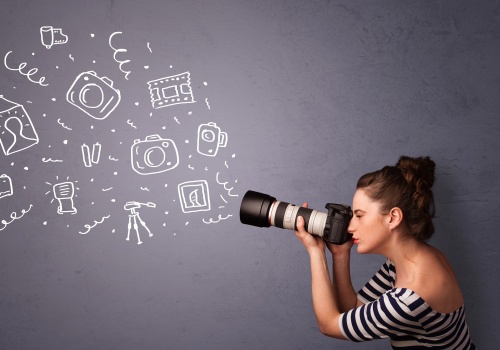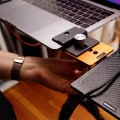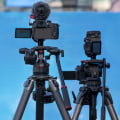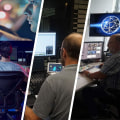Photography is an art form that requires an understanding of the fundamentals, like aperture and shutter speed. Aperture and shutter speed are two of the most important concepts in photography, as they determine how much light is allowed to enter the camera and how long the camera's shutter is open, respectively. Aperture and shutter speed work together to create an image that is both aesthetically pleasing and technically accurate. In this article, we will explore what aperture and shutter speed are, how they work together, and how to use them to take better photos. Aperture is measured in f-stops, which is a ratio of the lens's focal length divided by the diameter of the lens's aperture opening.
The lower the number, the larger the opening and the more light that will be let in. Common f-stop settings are f/2.8, f/4, f/5.6, f/8, f/11, f/16 and f/22. The most important thing to remember about aperture is that it affects both the amount of light that reaches the sensor and the depth of field in your images. A lower f-stop will result in more light reaching the sensor and a shallower depth of field (objects in the background will be out of focus).
A higher f-stop will result in less light and a deeper depth of field (more of the background will be in focus).Shutter speed is measured in seconds or fractions of a second, such as 1/500th of a second. The faster the shutter speed, the shorter the amount of time that light will be allowed to reach the sensor. This can be used to freeze motion or to create intentional motion blur. Fast shutter speeds will also require more light, so it is important to adjust your aperture accordingly.
For example, if you need a fast shutter speed to freeze motion but don't have enough light, you may need to open up your aperture (lower the f-stop) to let more light in. When shooting with both aperture and shutter speed, it's important to remember that they work together. If you increase one setting, you'll need to adjust the other setting accordingly in order to get the desired effect. For example, if you want a shallow depth of field (background out of focus), you'll need to open up your aperture (lower the f-stop) and increase your shutter speed to compensate for the extra light being let in. It's also important to note that different lenses have different maximum apertures (the lowest f-stop setting they can achieve). A lens with a maximum aperture of f/2.8 will be able to let in more light than a lens with a maximum aperture of f/5.6.
This means that if you are shooting in low light conditions, it may be beneficial to invest in a lens with a wider maximum aperture.
Effects of Aperture and Shutter Speed
Aperture and shutter speed can be used together to create very different effects in your photos. A lower f-stop (wider aperture) will result in more light reaching the sensor and a shallower depth of field (objects in the background will be out of focus). A higher f-stop (smaller aperture) will result in less light and a deeper depth of field (more of the background will be in focus). A faster shutter speed will freeze motion or create intentional motion blur. When using aperture and shutter speed together, it is important to keep in mind the relationship between them.For example, using a wide aperture (low f-stop) with a slow shutter speed will result in a more blurred image. Conversely, using a narrow aperture (high f-stop) with a fast shutter speed will result in a sharper image. It is also important to note that the aperture and shutter speed settings can also be used to affect the overall exposure of an image, as well as the amount of light reaching the sensor.
Tips for Using Aperture and Shutter Speed
When shooting with both aperture and shutter speed, it's important to remember that they work together - if you increase one setting, you'll need to adjust the other setting accordingly in order to get the desired effect. It's also important to invest in lenses with wider maximum apertures if you plan on shooting in low light conditions.The wider the aperture of your lens, the more light it can let in, allowing you to take brighter pictures in darker settings. When adjusting both the aperture and shutter speed, it's best to start with the aperture. This will give you a good baseline for how much light is coming in through the lens. You can then adjust the shutter speed to achieve the desired effect. For example, if you want to capture a sharp image of a moving object, then you'll need to use a fast shutter speed.
Conversely, if you want to create motion blur, then you'll need a slower shutter speed. It's important to experiment with different settings and combinations of aperture and shutter speed to get a feel for how they work together. With practice, you'll be able to easily adjust both settings to capture the perfect shot.
Aperture and Shutter Speed Settings
When shooting with both aperture and shutter speed, it's important to experiment with different settings in order to find the best combination for your scene. It's also important to note that different lenses have different maximum apertures (the lowest f-stop setting they can achieve). Aperture and shutter speed work together to determine the amount of light entering the camera.By adjusting these settings, you can control the exposure of the image and create the desired effect. Aperture is measured in f-stops, which is a ratio between the size of the opening and the focal length of the lens. The larger the f-stop, the smaller the opening will be. Shutter speed is measured in fractions of a second, and determines how long the shutter stays open to capture light. When shooting with both aperture and shutter speed, it's important to experiment with different settings in order to find the best combination for your scene.
Different combinations will produce different results, so it's worth experimenting to find out what works best for you. By understanding aperture and shutter speed, photographers can take control of their images and create stunning results. Aperture controls the amount of light that enters the lens, while shutter speed affects motion blur. Together, these two settings can be used to create a variety of effects in your photos. Practicing with different lenses and lighting conditions can help you to understand how they interact with each other.
With experience, you can gain a better grasp of the fundamentals of photography and how aperture and shutter speed work together.








